Venice: A Journey Through Timeless Architecture
Explore the architectural wonders of Venice on this free walking tour, where history and artistry blend seamlessly in every step.
Time
3 Hours
Stops
9 Places
Distance
2.8 km
Piazza San Marco (St. Mark's Square)
Known as the heart of Venice, this iconic square is surrounded by some of the city's most famous architectural marvels.
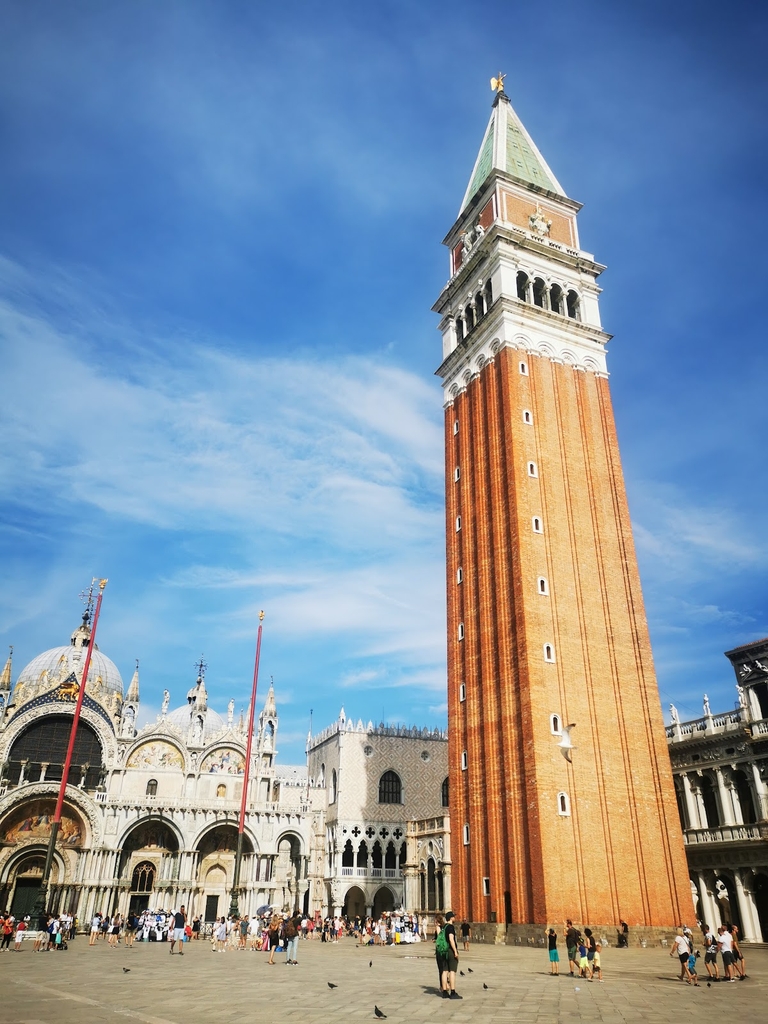
Piazza San Marco (St. Mark's Square) (Source: Google Maps)
Piazza San Marco, the principal public square of Venice, is often considered the city's heart. Surrounded by remarkable landmarks such as St. Mark's Basilica and the Doge's Palace, it serves as a vibrant hub for both locals and tourists. The square has been a gathering place since the 9th century, reflecting Venice's historical significance as a major maritime power. Its design features a distinctive trapezoidal shape, enhancing the perspective of the surrounding architecture. The square is also home to the iconic Campanile, a bell tower that offers breathtaking views of the city. The piazza is famous for its lively atmosphere, especially during the annual Venice Carnival, where elaborate masks and costumes fill the square, celebrating the city's rich cultural heritage.
Doge's Palace (Palazzo Ducale)
Once the residence of the Doge of Venice, this gothic palace showcases the grandeur of Venetian architecture and history.
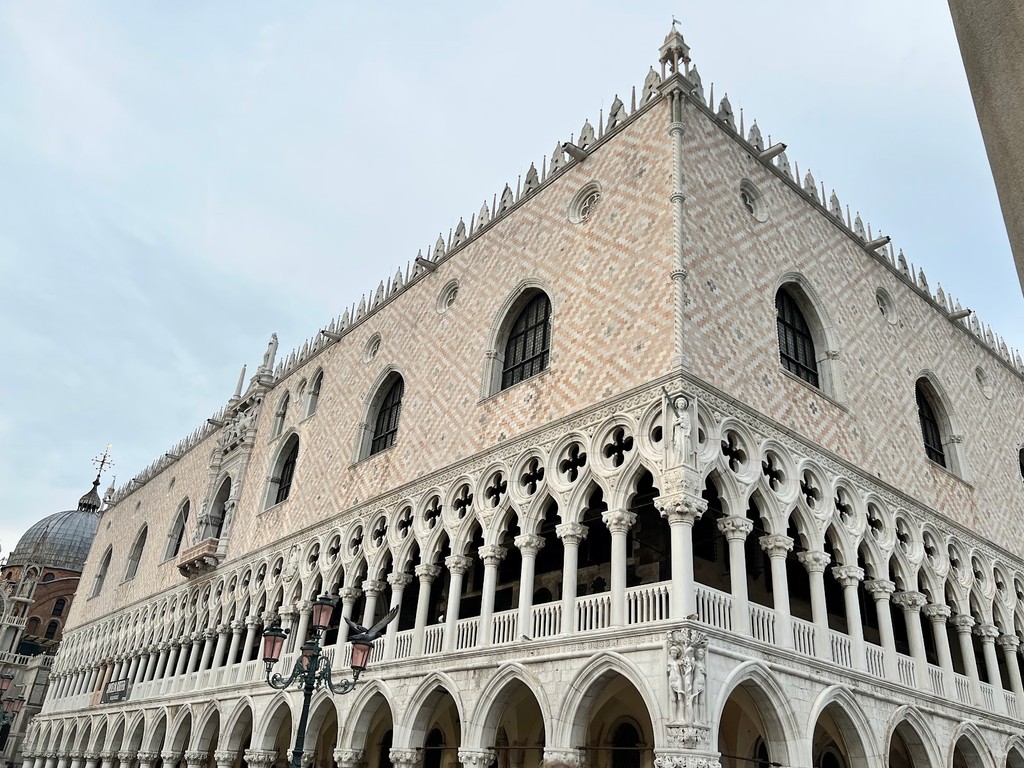
Doge's Palace (Palazzo Ducale) (Source: Google Maps)
The Doge's Palace is a masterpiece of Gothic architecture, serving as the historic residence of the Doge of Venice. Construction began in the 14th century, and the building features intricate details, such as its ornate façade adorned with pink and white stone. The palace is not only a symbol of Venetian power but also a representation of the city’s unique blend of Eastern and Western architectural styles. Inside, visitors can explore lavish rooms, including the Grand Council Chamber, adorned with stunning works by Tintoretto and Veronese. The palace also features the infamous Bridge of Sighs, connecting it to the prison, where prisoners would catch their last glimpse of the outside world. This landmark is a testament to Venice's political history and artistic achievements, attracting visitors from around the globe.
Bridge of Sighs (Ponte dei Sospiri)
This enclosed bridge is an architectural gem, known for its romantic and historical significance.
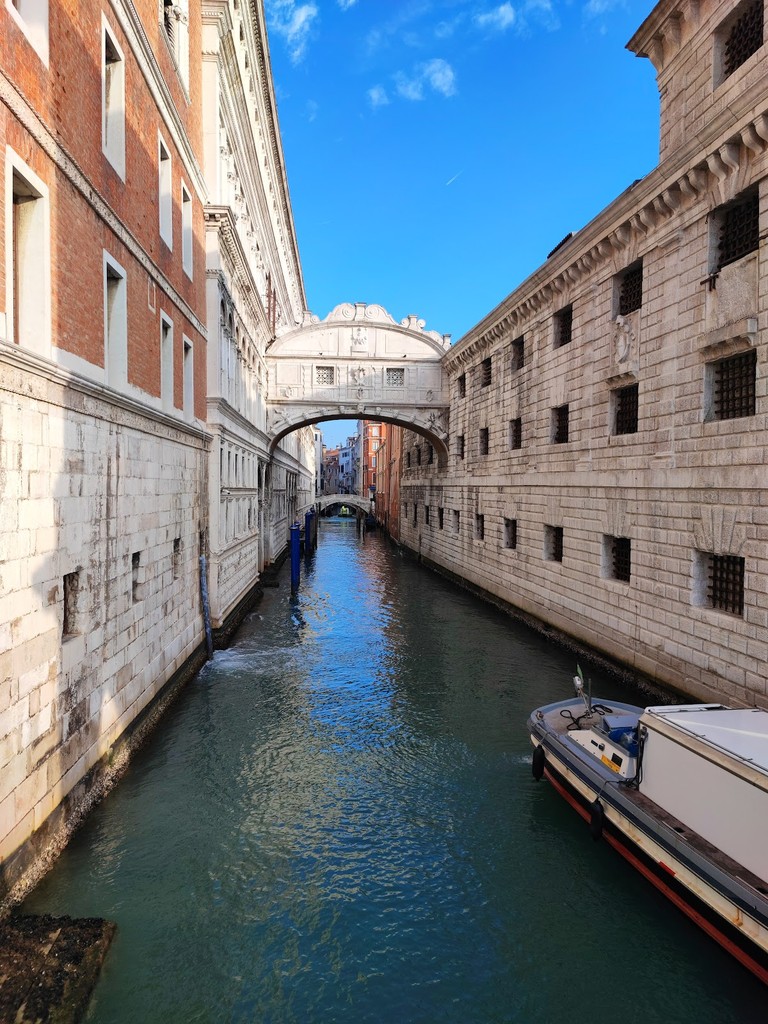
Bridge of Sighs (Ponte dei Sospiri) (Source: Google Maps)
The Bridge of Sighs is an iconic enclosed bridge in Venice, connecting the Doge's Palace to the prison. Built in the early 17th century, it features a beautiful Baroque design characterized by its white limestone and distinctive arches. The bridge earned its name from the sighs of prisoners who would cross it, catching a final glimpse of Venice before their incarceration. Its romantic and historical significance makes it one of the most photographed landmarks in the city. The bridge is also an architectural marvel, showcasing the ingenuity of Venetian engineers. Visitors often admire its exterior from the nearby canals, while its interior offers a glimpse into the dark history of Venice's judicial system. The Bridge of Sighs remains a poignant symbol of love and loss, capturing the essence of Venice's complex past.
Basilica di San Marco (St. Mark's Basilica)
A masterpiece of Italo-Byzantine architecture, the basilica is renowned for its opulent design and stunning mosaics.
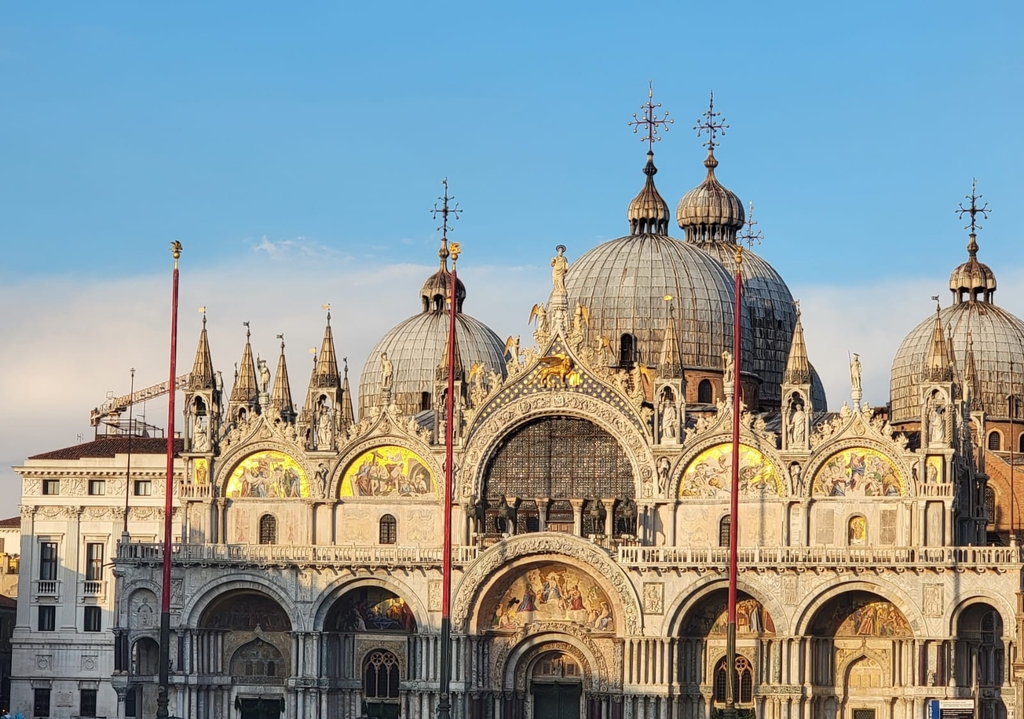
Basilica di San Marco (St. Mark's Basilica) (Source: Google Maps)
The Basilica di San Marco is a stunning example of Italo-Byzantine architecture, renowned for its opulent design and intricate mosaics. Constructed in the 11th century, the basilica serves as the cathedral of Venice and is dedicated to St. Mark, the city’s patron saint. Its façade is adorned with golden mosaics that depict biblical scenes, creating a breathtaking sight for visitors. The basilica's five domes and ornate interiors showcase the influence of Eastern architecture, reflecting Venice's historical trade connections with the Byzantine Empire. Inside, visitors can marvel at the Pala d'Oro, a magnificent altarpiece encrusted with precious gems. The basilica also houses the relics of St. Mark, adding to its spiritual significance. As a central landmark of Venice, the basilica attracts millions of visitors each year, making it a must-see for anyone exploring the city's rich cultural heritage.
Rialto Bridge (Ponte di Rialto)
The oldest of the four bridges spanning the Grand Canal, Rialto Bridge is a stunning example of Renaissance architecture.
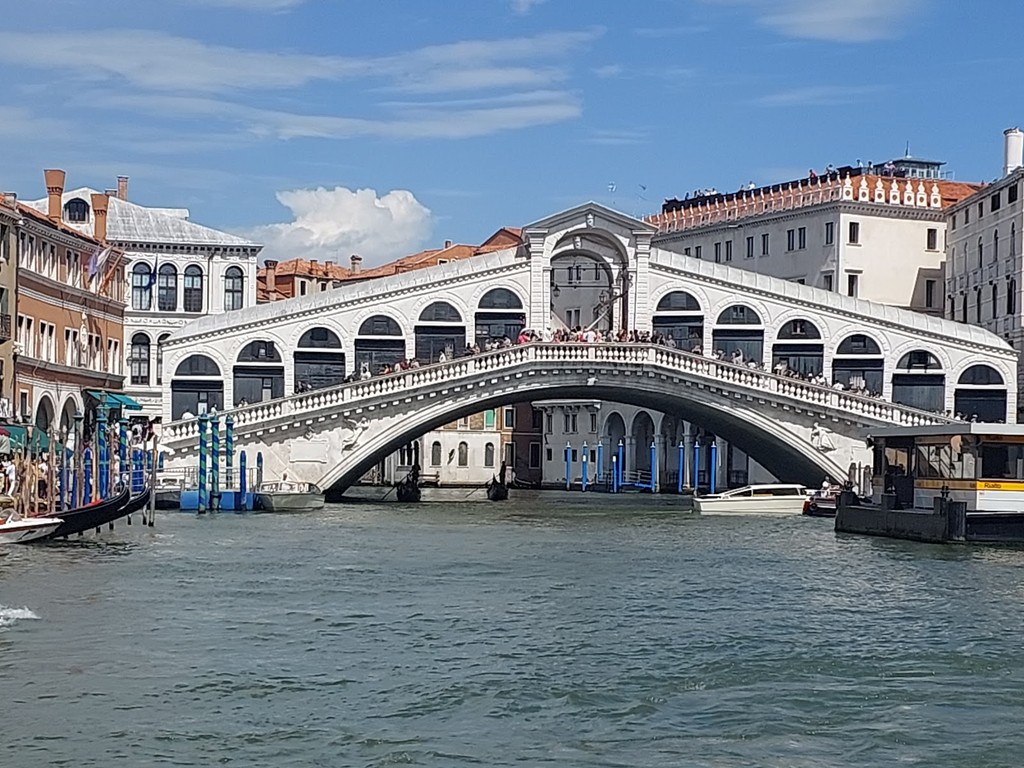
Rialto Bridge (Ponte di Rialto) (Source: Google Maps)
The Rialto Bridge is the oldest and most famous bridge spanning the Grand Canal, renowned for its stunning Renaissance architecture. Completed in 1591, the bridge features a striking design with a central arch flanked by two walkways, providing a picturesque view of the bustling canal below. The bridge was originally built as a wooden structure, but after several collapses, it was reconstructed in stone, showcasing the ingenuity of Venetian architects. Rialto Bridge serves as a vital connection between the districts of San Marco and San Polo, and it has always been a hub for commerce and trade. Today, it is lined with shops and offers visitors a vibrant atmosphere. The bridge is not only an architectural marvel but also a symbol of Venice's economic power during the Renaissance. Its iconic status makes it one of the most photographed landmarks in the city.
Campo San Polo
Known for being one of the largest squares in Venice, Campo San Polo is surrounded by beautiful historic buildings and a vibrant atmosphere.
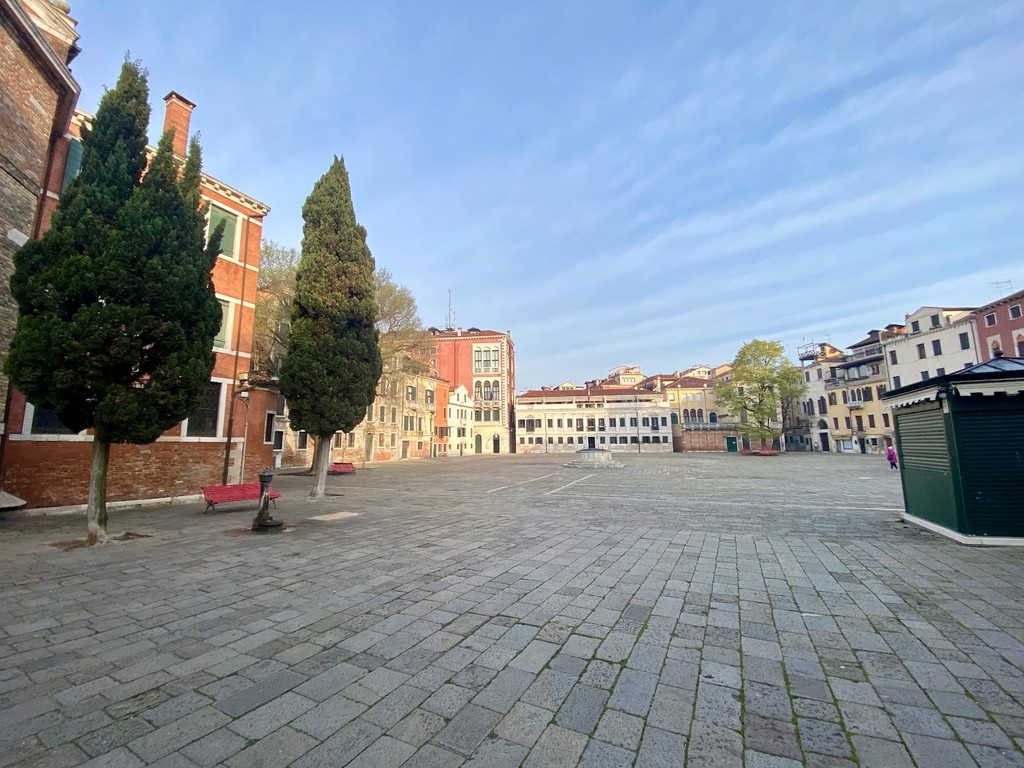
Campo San Polo (Source: Google Maps)
Campo San Polo is one of the largest squares in Venice, known for its beautiful historic buildings and vibrant atmosphere. Located in the San Polo district, the square has been a social and cultural hub since the Middle Ages. Surrounded by charming Venetian architecture, including the Church of San Polo, the square is a popular gathering place for locals and tourists alike. Historically, it has served various purposes, from hosting markets to public events and festivals. The square's spacious layout provides a perfect setting for relaxation or enjoying a leisurely stroll. Visitors can often find open-air performances and art exhibitions, adding to the lively ambiance. Campo San Polo is a testament to Venice's rich cultural heritage and offers a glimpse into the daily life of its residents, making it a must-visit destination.
Basilica di Santa Maria Gloriosa dei Frari
This Gothic church is famous for its impressive architecture and artworks by Titian and Bellini.
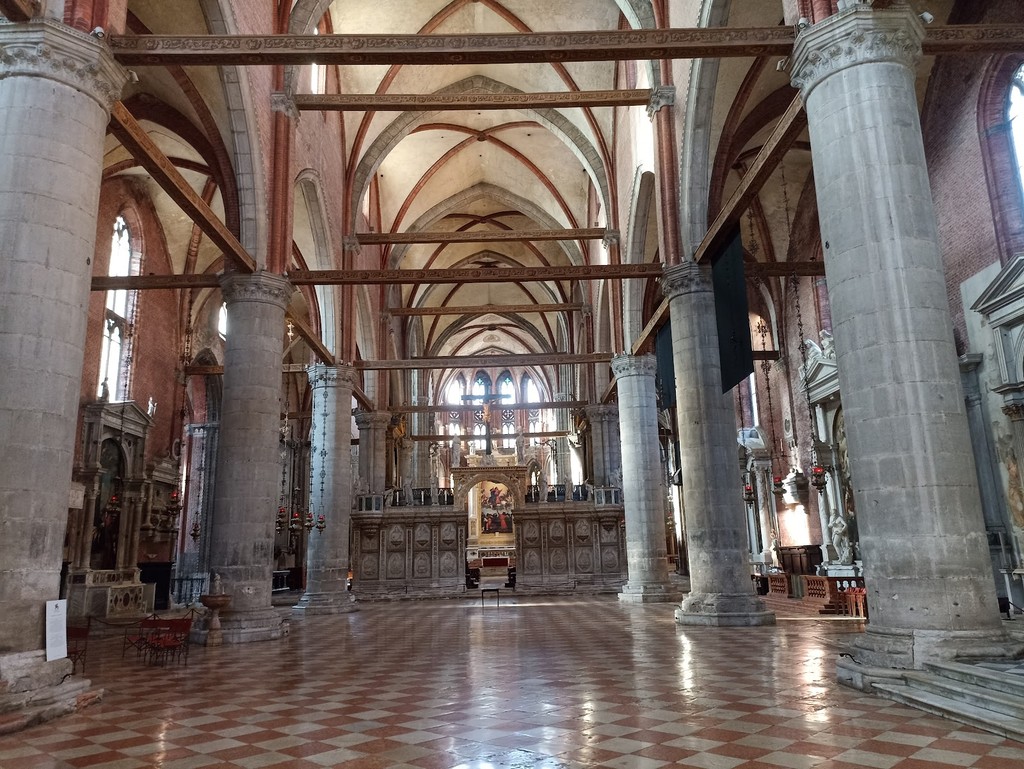
Basilica di Santa Maria Gloriosa dei Frari (Source: Google Maps)
The Basilica di Santa Maria Gloriosa dei Frari is a magnificent Gothic church located in the heart of Venice. Founded in the 13th century, the basilica is renowned for its impressive architecture and stunning artworks, including masterpieces by Titian and Bellini. The church's façade features intricate details and a tall bell tower, making it a prominent landmark in the city. Inside, visitors are greeted by a breathtaking interior adorned with beautiful chapels and altars, showcasing the artistic achievements of the Venetian Renaissance. The highlight of the basilica is the Assumption of the Virgin by Titian, a monumental altarpiece that captivates visitors with its vibrant colors and dramatic composition. The basilica also houses the tombs of several notable Venetians, adding to its historical significance. As a place of worship and artistic expression, the Basilica di Santa Maria Gloriosa dei Frari remains a vital part of Venice's cultural heritage.
Scuola Grande di San Rocco
Known for its magnificent collection of Tintoretto paintings, this building showcases the grandeur of Venetian Renaissance architecture.
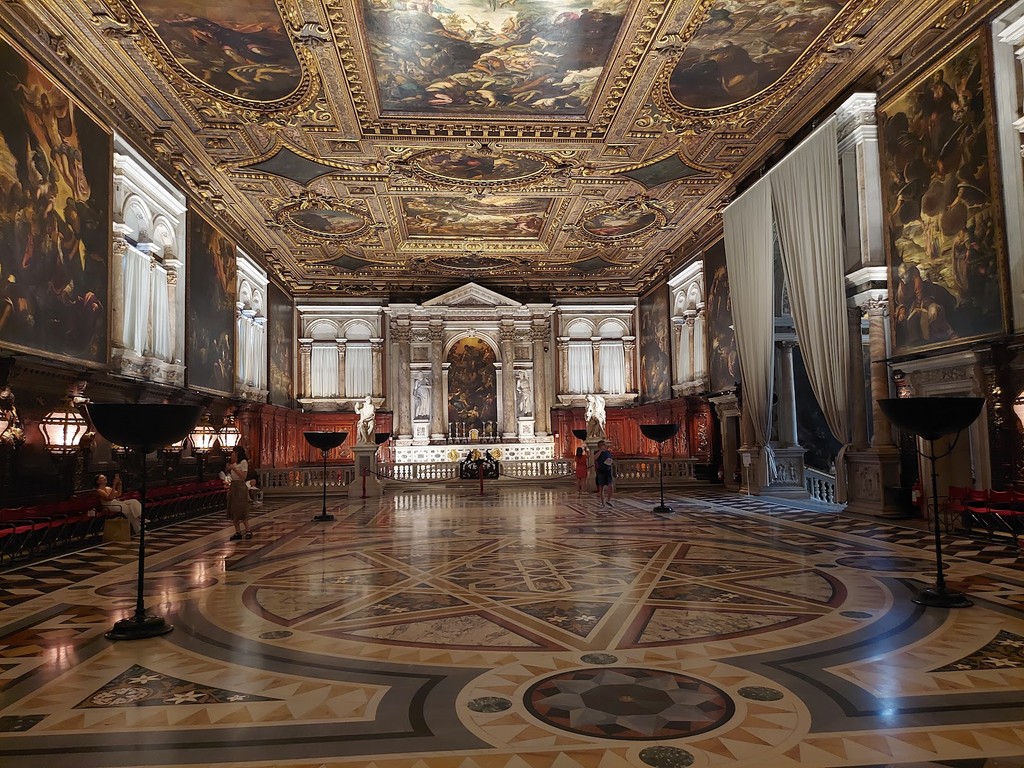
Scuola Grande di San Rocco (Source: Google Maps)
The Scuola Grande di San Rocco is a remarkable building in Venice, celebrated for its magnificent collection of Tintoretto paintings. Established in the 16th century, this confraternity hall showcases the grandeur of Venetian Renaissance architecture, featuring an impressive façade and a stunning interior. The building's design includes ornate ceilings and intricate woodwork, creating a captivating atmosphere for visitors. Tintoretto, one of Venice's most famous painters, was commissioned to decorate the Scuola, resulting in a series of breathtaking works that tell biblical stories. The most notable piece is the Crucifixion, a dramatic and dynamic composition that exemplifies Tintoretto's unique style. The Scuola Grande di San Rocco serves not only as an artistic treasure but also as a testament to the city's rich cultural and religious history, attracting art lovers and tourists from around the world.
Ca' Rezzonico
A stunning example of Baroque architecture, this museum offers a glimpse into the opulent lifestyle of 18th-century Venetian nobility.
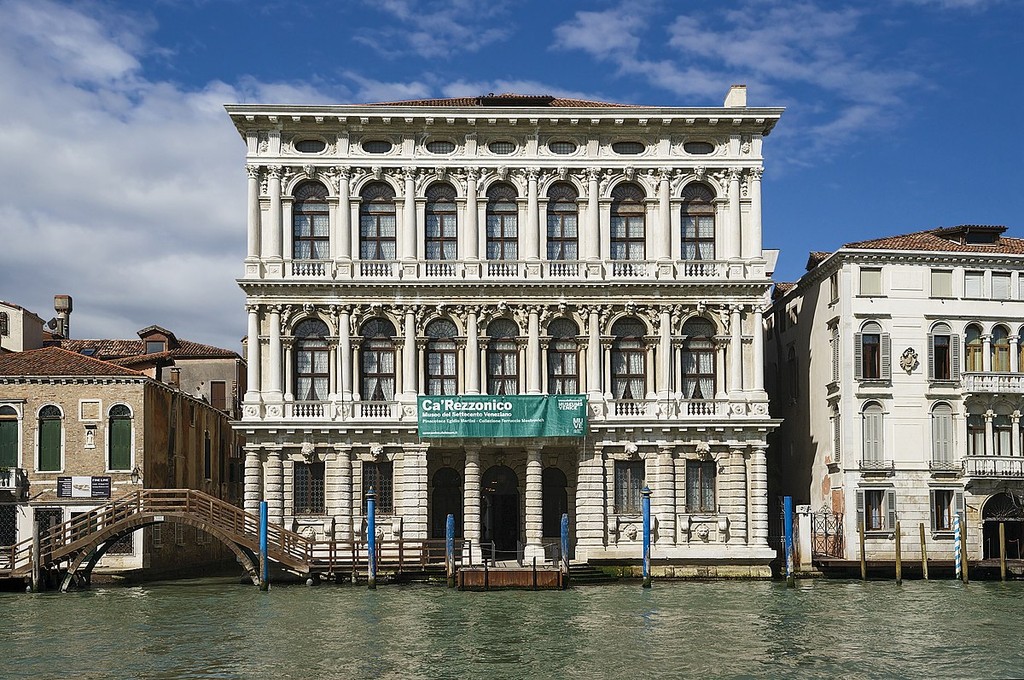
Ca' Rezzonico (Source: Google Maps)
Ca' Rezzonico is a stunning example of Baroque architecture, located along the Grand Canal in Venice. Built in the 18th century, this opulent palace showcases the lifestyle of Venetian nobility during the height of the Baroque period. The exterior features an elaborate façade adorned with intricate details, while the interior is equally impressive, boasting lavish rooms and exquisite decorations. The palace is home to the Museo del Settecento Veneziano, which houses a remarkable collection of art and artifacts from the 18th century. Visitors can explore the grand ballroom, beautifully frescoed ceilings, and the stunning staircase that exemplifies the craftsmanship of the time. Ca' Rezzonico not only offers insight into the opulent lifestyle of the Venetian elite but also serves as a cultural hub, hosting various exhibitions and events throughout the year. Its architectural beauty and historical significance make it a must-visit landmark in Venice.

Your travels, your rules.
Create your own Free Walking Tours.
Set your preferences, distances and anything you want to do or see.
Completely free, no payment required.